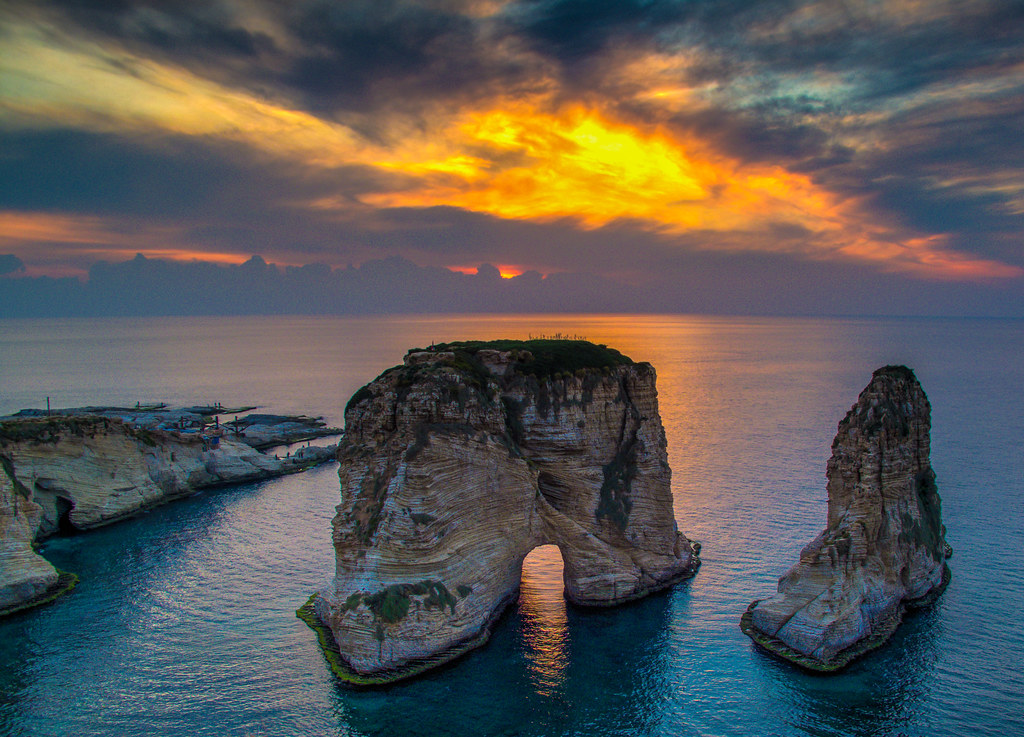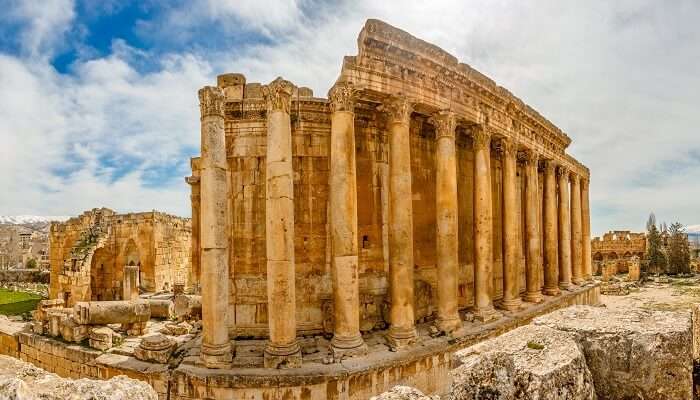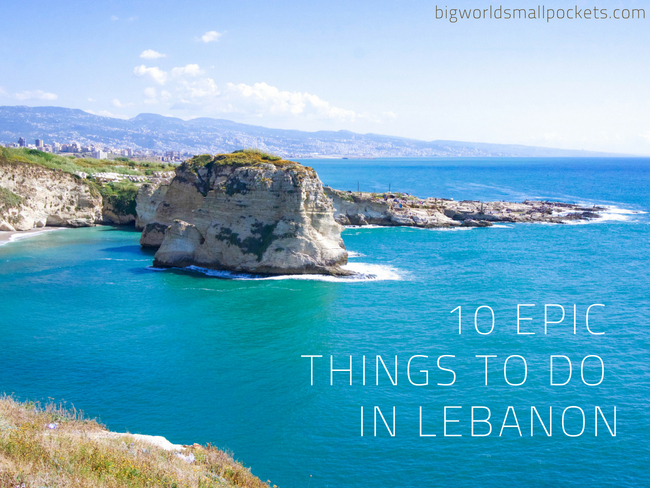
Nestled on the eastern shores of the Mediterranean, Lebanon is a land of captivating contrasts, where ancient history whispers through modern cityscapes and snow-capped mountains meet sun-kissed beaches. Often referred to as the "Pearl of the Middle East" or the "Paris of the Middle East" in its heyday, Lebanon boasts a vibrant culture, legendary hospitality, and a resilience that shines through its challenging past. Despite its small size, this nation offers an astonishing array of experiences, from exploring millennia-old ruins to indulging in world-class cuisine and vibrant nightlife.
This guide will take you on a journey through Lebanon’s top attractions, delve into its fascinating history, and provide essential travel tips to ensure an unforgettable adventure in this truly unique corner of the world.
A Glimpse into Lebanon’s Rich History: Millennia of Civilization

Related Articles about Discover the Jewel of the Levant: Your Ultimate Guide to Exploring Lebanon:
- Yogyakarta: A Comprehensive Guide to the Soul of Java
- Krabi: Thailand’s Andaman Jewel – A Comprehensive Travel Guide
- Kuala Lumpur: A Tapestry of Tradition and Tomorrow
- Unveiling the Roof of the World: A Comprehensive Guide to Nepal
- Kazakhstan: A Traveler’s Guide to the Land of Steppe and Sky
Lebanon’s history is a tapestry woven from the threads of countless civilizations, each leaving an indelible mark on its landscape and culture. Its strategic location at the crossroads of three continents made it a coveted territory for empires throughout history, resulting in a heritage that is both rich and complex.
The story begins with the Phoenicians, an ancient maritime trading civilization that flourished over 3,000 years ago. From their coastal city-states like Byblos, Tyre, and Sidon, they established trade routes across the Mediterranean, developing the first phonetic alphabet – a monumental contribution to human civilization. These cities remain archaeological treasures today, offering tangible links to this foundational era.
Following the Phoenicians, Lebanon fell under the sway of numerous powers: the Assyrians, Babylonians, Persians, and Greeks. The arrival of Alexander the Great in the 4th century BCE brought Hellenistic influence, which was later superseded by the mighty Roman Empire. The Romans left behind some of Lebanon’s most spectacular ruins, most notably the colossal temples of Baalbek, a testament to their architectural prowess and imperial grandeur.
Centuries later, the region became part of the Byzantine Empire, followed by the Arab conquests in the 7th century, which introduced Islam and the Arabic language that predominates today. The Crusaders established a presence in the 11th to 13th centuries, building formidable castles like the Sea Castle in Sidon and the Byblos Citadel.
The Ottoman Empire then ruled for over 400 years, from the early 16th century until its collapse after World War I. This period saw the development of distinctive Ottoman architecture and administrative structures. After the Ottomans, Lebanon became a French Mandate from 1920 to 1943, absorbing significant French cultural and linguistic influences that are still evident.
Gaining independence in 1943, Lebanon embarked on a period of prosperity and cultural flourishing, earning it the moniker "Switzerland of the Middle East" and "Paris of the Middle East." However, this golden age was tragically interrupted by a devastating civil war (1975-1990). Despite the scars of conflict, Lebanon has shown remarkable resilience, rebuilding its cities and once again welcoming visitors to explore its timeless beauty and vibrant spirit. Understanding this layered history is key to appreciating the depth and character of modern Lebanon.
Top Attractions: Where Ancient Wonders Meet Modern Vibrancy
Lebanon’s small size belies the incredible diversity of its attractions. From bustling cosmopolitan cities to serene mountain retreats and breathtaking archaeological sites, there’s something to captivate every traveler.
Beirut: The Resilient Capital

Beirut, the capital, is a city of remarkable resilience and energy. Its downtown area is a fascinating blend of old and new, featuring meticulously restored Ottoman-era buildings alongside Roman ruins and modern architecture.
- Downtown Beirut: Explore Martyrs’ Square, the Mohammad Al-Amin Mosque (often called the "Blue Mosque"), and the adjacent St. George Maronite Cathedral. Wander through the Roman Baths, and marvel at the Grand Serail.
- National Museum of Beirut: A must-visit for history enthusiasts, housing an impressive collection of artifacts tracing Lebanon’s history from prehistory to the Mamluk period.
- Gemmayzeh & Mar Mikhael: These adjacent neighborhoods are renowned for their vibrant nightlife, charming pubs, art galleries, and beautifully preserved traditional Lebanese architecture.
- Corniche: A scenic seaside promenade perfect for a stroll, offering views of Pigeon Rocks (Raouché) and the Mediterranean.
- American University of Beirut (AUB) campus: An oasis of tranquility with stunning architecture and a small but excellent archaeological museum.
North Lebanon: Phoenician Roots and Sacred Valleys
Heading north from Beirut, you encounter some of Lebanon’s most iconic historical sites.
- Byblos (Jbeil): A UNESCO World Heritage site and one of the oldest continuously inhabited cities in the world. Explore the Crusader Castle, the ancient Phoenician port, the Roman amphitheater, and wander through the charming old souk. Byblos is a quintessential Lebanese experience.
- Tripoli: Lebanon’s second-largest city offers an authentic, less-touristy experience. Discover the Citadel of Raymond de Saint-Gilles, explore the labyrinthine old souks (one of the largest in the Levant), and visit the Hammam al-Abiad.
- Qadisha Valley (Holy Valley) & Cedars of God: Another UNESCO World Heritage site, the Qadisha Valley is a deep gorge carved into the mountains, home to ancient Christian monasteries carved into the cliffs. Further up, the majestic Cedars of God forest is a remnant of the ancient cedar forests of Lebanon, revered since biblical times. It’s a place of immense natural beauty and spiritual significance.
Bekaa Valley: Roman Grandeur and Vineyards
East of Beirut, the fertile Bekaa Valley is famous for its agricultural bounty and ancient ruins.
- Baalbek: The undisputed crown jewel of Roman archaeology in Lebanon, and a UNESCO World Heritage site. The sheer scale and preservation of the Temples of Jupiter, Bacchus, and Venus are awe-inspiring. It’s truly one of the greatest Roman sites in the world.
- Wineries: The Bekaa is Lebanon’s premier wine region. Visit renowned wineries like Château Ksara and Château Kefraya for tours and tastings.
South Lebanon: Coastal Cities and Roman Hippodromes
The south offers more historical coastal gems and beautiful beaches.
- Tyre (Sour): A UNESCO World Heritage site, Tyre boasts impressive Roman ruins, including a monumental hippodrome and vast archaeological sites like Al-Mina. It also has lovely sandy beaches, making it a great spot for a relaxed day.
- Sidon (Saida): Explore the atmospheric Sea Castle, built by Crusaders, wander through the bustling old souk, and visit the fascinating Soap Museum, housed in a renovated Ottoman-era soap factory.
Things to Do: Beyond the Landmarks
Lebanon offers more than just historical sites; it’s a destination rich in experiences that engage all the senses.
Culinary Delights: Lebanese cuisine is legendary – fresh, flavorful, and incredibly diverse.
- Mezze: Start every meal with a spread of delicious small dishes like hummus, baba ghanoush, tabouleh, kibbeh, and warak enab (stuffed grape leaves).
- Street Food: Indulge in manakish (flatbreads), shawarma, and falafel from local vendors.
- Seafood: Enjoy fresh catches along the coast in cities like Batroun or Tyre.
- Arak: Sample Lebanon’s traditional anise-flavored alcoholic drink.
- Food Tours & Cooking Classes: Immerse yourself in the culinary scene with guided tours or learn to prepare traditional dishes.
Outdoor Adventures: Lebanon’s diverse landscape is a playground for outdoor enthusiasts.
- Hiking: Explore the stunning trails of the Chouf Biosphere Reserve (home to more ancient cedars) or the Qadisha Valley.
- Skiing: In winter (December to March), hit the slopes at resorts like Faraya Mzaar, Laqlouq, or the Cedars of God. Lebanon is one of the few places where you can ski in the morning and swim in the Mediterranean in the afternoon!
- Caving: Discover the magnificent Jeita Grotto, a breathtaking system of limestone caves with impressive stalactites and stalagmites, explored partly by boat.
- Beaches: Relax on the sandy shores of Tyre, the pebble beaches of Batroun, or the lively resorts of Jounieh.
- Paragliding: Experience an exhilarating flight over the Jounieh Bay for panoramic views.
Cultural Experiences:
- Festivals: If visiting in summer, check out the prestigious Baalbek International Festival or the Byblos International Festival, which host world-renowned artists.
- Art & Music: Explore Beirut’s thriving contemporary art scene and live music venues.
- Shopping: Haggle for souvenirs, spices, and local crafts in the atmospheric souks.
Vibrant Nightlife:
- Beirut is famous for its lively nightlife, especially in the Mar Mikhael, Gemmayzeh, and Hamra districts, offering everything from cozy pubs to chic rooftop bars and pulsating nightclubs.
Travel Tips for a Seamless Journey
Navigating a new country is always easier with a few pointers. Here’s what you need to know for a smooth trip to Lebanon.
- Safety: While Lebanon has faced challenges, tourist areas are generally safe. However, it’s always wise to stay informed about local and regional political developments, consult your government’s travel advisories, and exercise common sense. Stick to well-traveled routes and avoid any border regions.
- Visa: Many nationalities, including most European Union citizens, Americans, Canadians, and Australians, can obtain a visa on arrival at Beirut-Rafic Hariri International Airport. Always check the latest visa requirements for your specific nationality before traveling.
- Currency: The official currency is the Lebanese Lira (LBP), but the US Dollar (USD) is widely accepted and often preferred due to hyperinflation and the Lira’s fluctuating value. Prices are frequently quoted in USD. It’s advisable to carry both, but primarily USD cash for larger expenses and LBP for smaller purchases.
- Language: Arabic is the official language. However, French and English are very widely spoken, especially in Beirut and tourist areas, thanks to Lebanon’s historical ties. Learning a few basic Arabic phrases like "marhaba" (hello) and "shukran" (thank you) will be appreciated.
- Dress Code: In Beirut and major cities, dress is generally liberal and modern. However, when visiting religious sites (mosques or churches), it’s respectful to dress modestly, covering shoulders and knees. Women may be asked to cover their heads in mosques.
- Internet & Connectivity: SIM cards are readily available from providers like Touch or Alfa at the airport or mobile stores. Wi-Fi is common in hotels, cafes, and restaurants, though it can sometimes be slow.
- Local Etiquette: Lebanese people are renowned for their hospitality and warmth. Be prepared for friendly greetings and offers of coffee. Bargaining is common in souks. Tipping is customary in restaurants (10-15%) and for taxi drivers.
- Health: Tap water is generally not safe for drinking; stick to bottled water.
- Power Outages: Scheduled power cuts are common throughout the country. Most hotels and businesses use generators to ensure continuous electricity, but it’s something to be aware of.
Accommodation Options: From Boutique to Budget
Lebanon offers a range of accommodation to suit every taste and budget, predominantly centered in Beirut and key tourist towns.
- Beirut: The capital boasts a wide selection, from luxurious five-star hotels like the Four Seasons and Phoenicia Hotel, to charming boutique hotels such as Le Gray or Hotel Albergo, known for their unique character. You’ll also find plenty of mid-range hotels, guesthouses, and apartment rentals.
- Outside Beirut: In historic towns like Byblos and Batroun, you can find charming guesthouses and smaller hotels that often reflect local architecture. Mountain regions, especially around the Chouf Biosphere Reserve, offer eco-lodges and guesthouses that provide a tranquil escape. Ski resorts have their own hotels and chalets during the winter season.
- Booking: Major online booking platforms work well in Lebanon. For smaller guesthouses, direct booking through their websites or social media might be an option.
Getting Around Lebanon: Navigating the Roads
While Lebanon is small, its mountainous terrain and varied road conditions mean getting around requires some planning.
- Car Rental: Renting a car offers the most flexibility, allowing you to explore at your own pace. However, be prepared for sometimes chaotic city traffic, aggressive driving, and varying road quality outside major highways. A GPS or reliable navigation app is essential.
- Taxis & Ride-Hailing Apps: Taxis are plentiful in cities. Always agree on a fare before starting your journey, as meters are rarely used. Ride-hailing apps like Bolt and Careem are popular in Beirut and its suburbs, offering fixed prices and convenience.
- Service (Shared Taxis): These are shared taxis that operate on fixed routes between cities. They are an economical option but less comfortable and involve waiting for the car to fill up. Agree on the fare before getting in.
- Private Drivers/Tours: For day trips to historical sites or multiple destinations, hiring a private driver for the day or joining an organized tour is a convenient and stress-free option, allowing you to relax and enjoy the scenery.
- Buses: While local buses exist, their network isn’t comprehensive or particularly tourist-friendly for inter-city travel.
Best Time to Visit: Seasons of Splendor
Lebanon truly offers four distinct seasons, each with its own charm.
- Spring (April-May): This is arguably the best time to visit. The weather is mild and pleasant, the landscapes are lush and green with wildflowers, and it’s ideal for sightseeing, hiking, and exploring without the intense summer heat.
- Autumn (September-October): Similar to spring, autumn offers comfortable temperatures, fewer crowds, and beautiful fall foliage in the mountains. It’s excellent for cultural tours and outdoor activities.
- Summer (June-August): Summers are hot and humid, especially on the coast. However, this is when Lebanon truly comes alive with beach activities, vibrant nightlife, and major international festivals (like Baalbek and Byblos). The mountains offer a cooler escape.
- Winter (December-March): While cooler and wetter in the cities, winter is prime time for skiing in the Lebanese mountains. It’s also a quieter period for exploring historical sites, though some mountain roads might be affected by snow.
An Unforgettable Journey Awaits
Lebanon is a country that defies expectations. It’s a land where ancient history breathes, where diverse cultures intertwine, and where breathtaking natural beauty provides a stunning backdrop to unparalleled hospitality. From the Roman grandeur of Baalbek to the Phoenician charm of Byblos, the vibrant energy of Beirut, and the serene beauty of the Cedars, Lebanon promises an adventure filled with discovery, warmth, and unforgettable memories. Come and experience the magic of the Levant – you’ll leave with a piece of its resilient spirit forever in your heart.





